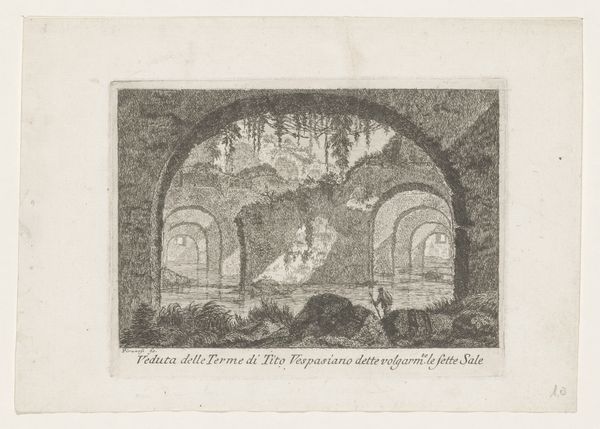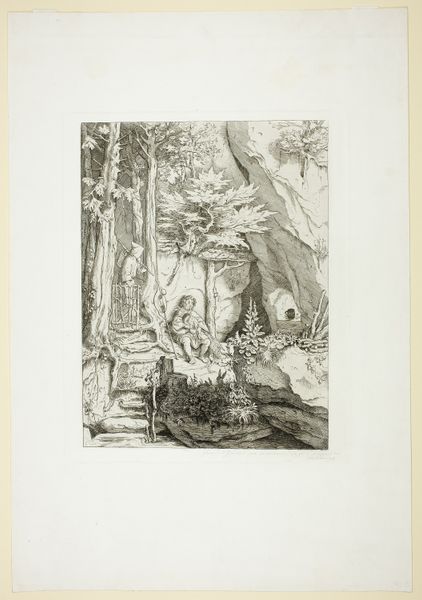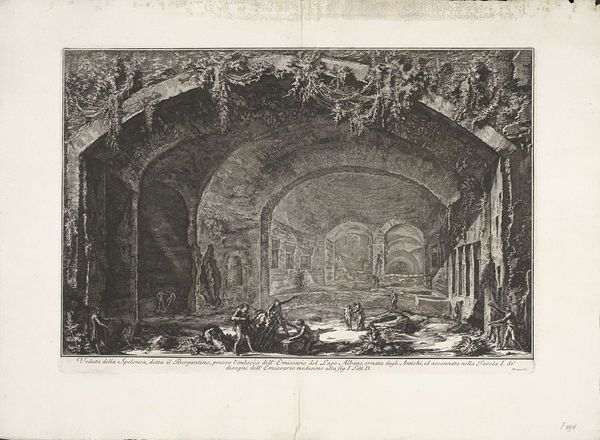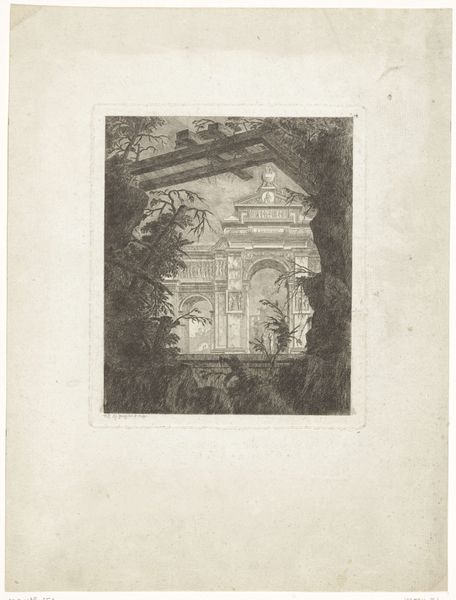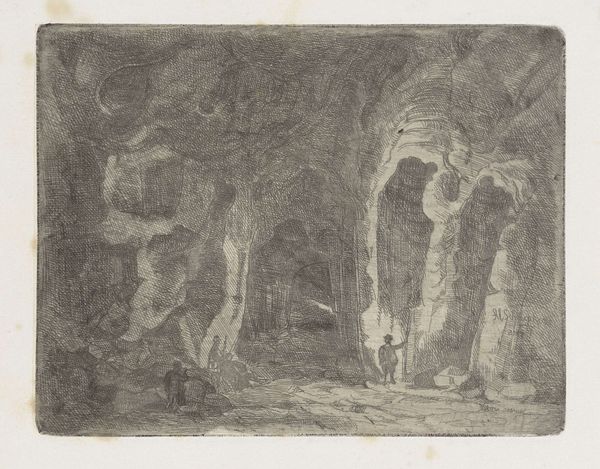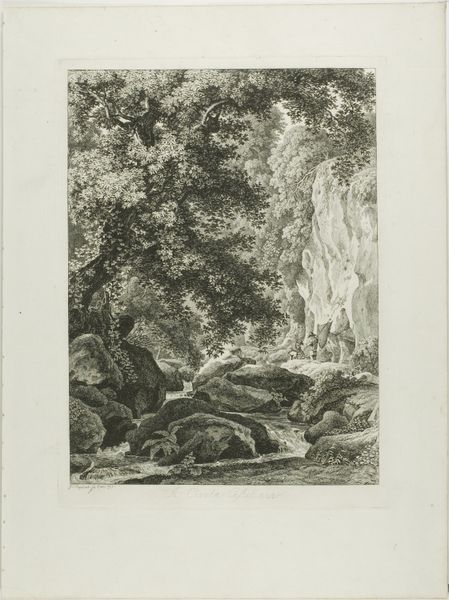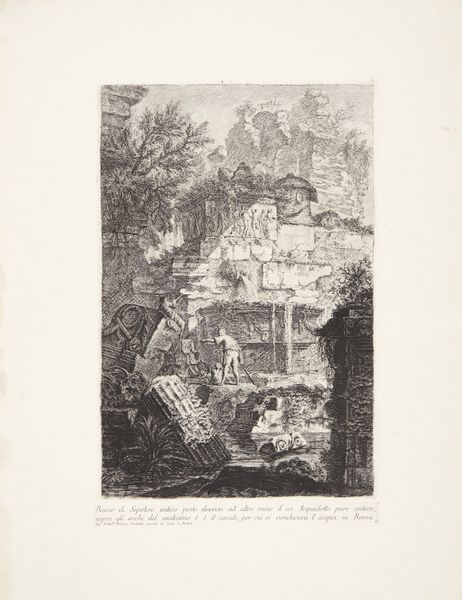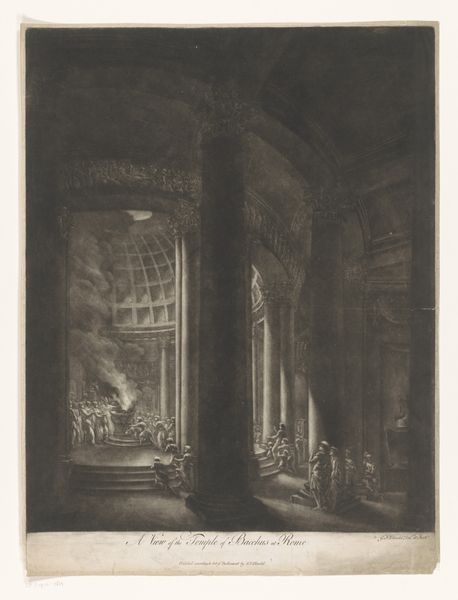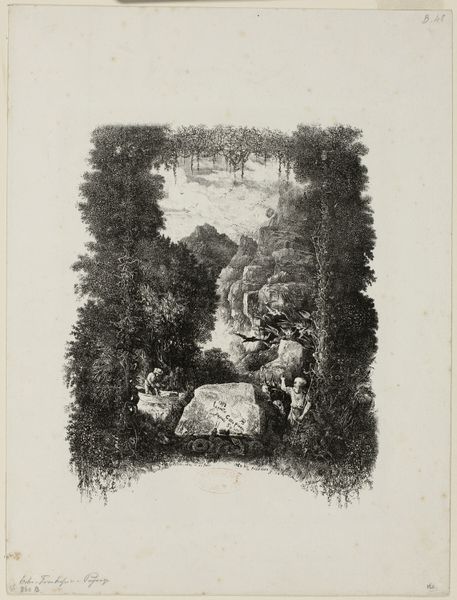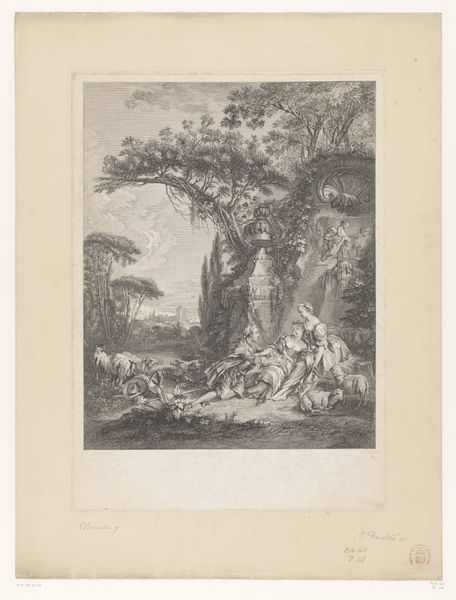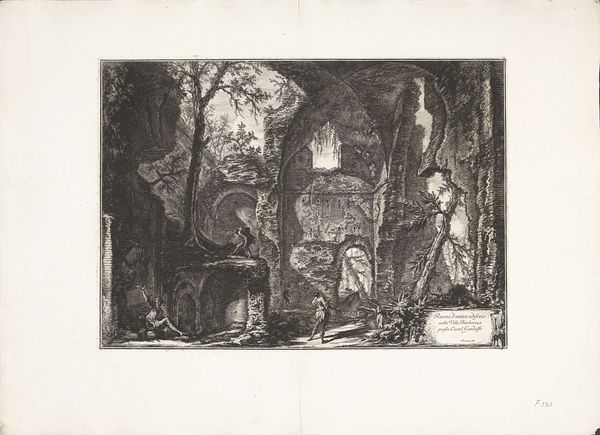
Dimensions: height 474 mm, width 282 mm
Copyright: Rijks Museum: Open Domain
Giovanni Battista Piranesi created this print of an underground water reservoir in the Albanian Hills, sometime around the mid-18th century. It's a stunning example of how the artistic and the historical intertwine. Piranesi, an Italian artist, was known for his etchings of Roman architecture and ruins. But he wasn't just documenting them; he was re-interpreting them. In this image, we see the practical engineering of Roman aqueducts combined with the romanticism of the 18th century. The dramatic light and shadow, the wild overgrowth, and the figures engaged in labor all contribute to a sense of awe and perhaps even a critique of contemporary society. Was Piranesi subtly commenting on the decline of civic virtue or the loss of connection with nature? As historians, we examine sources, like diaries, letters, and other artworks, to understand the nuances of Piranesi's world. Only then can we begin to appreciate the complex interplay between art, society, and history.
Comments
No comments
Be the first to comment and join the conversation on the ultimate creative platform.
